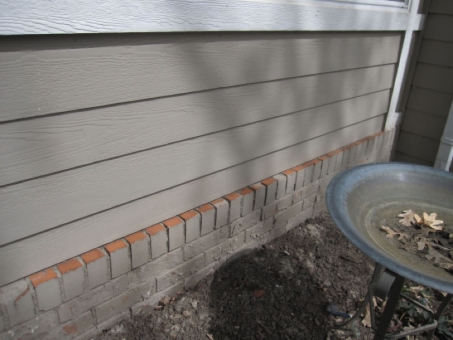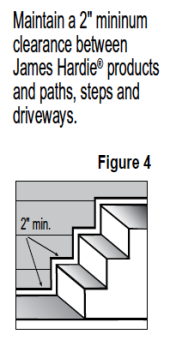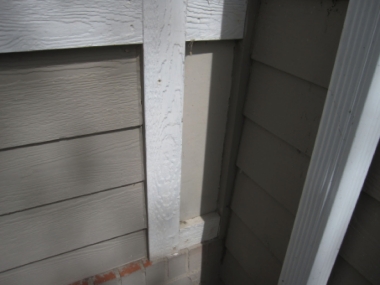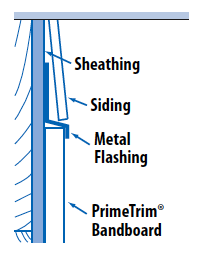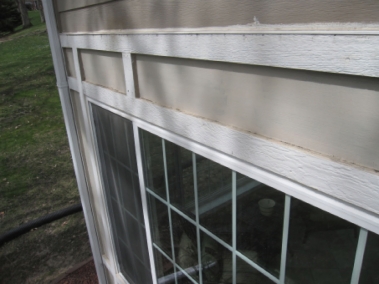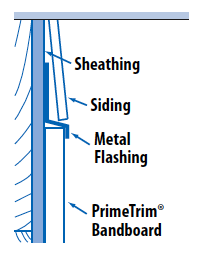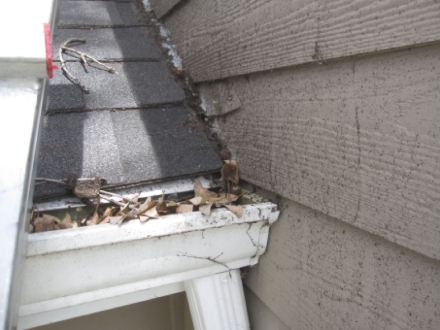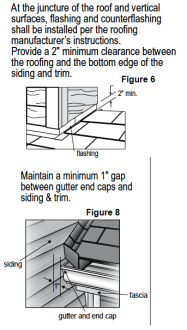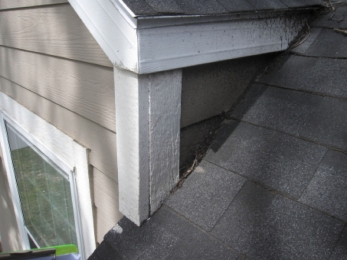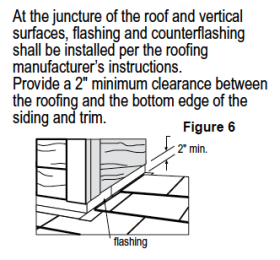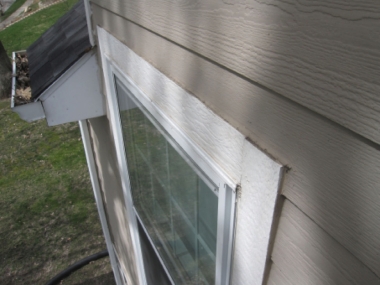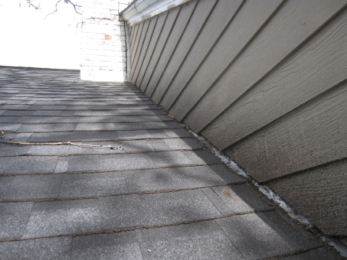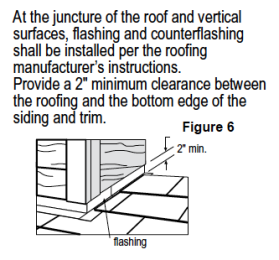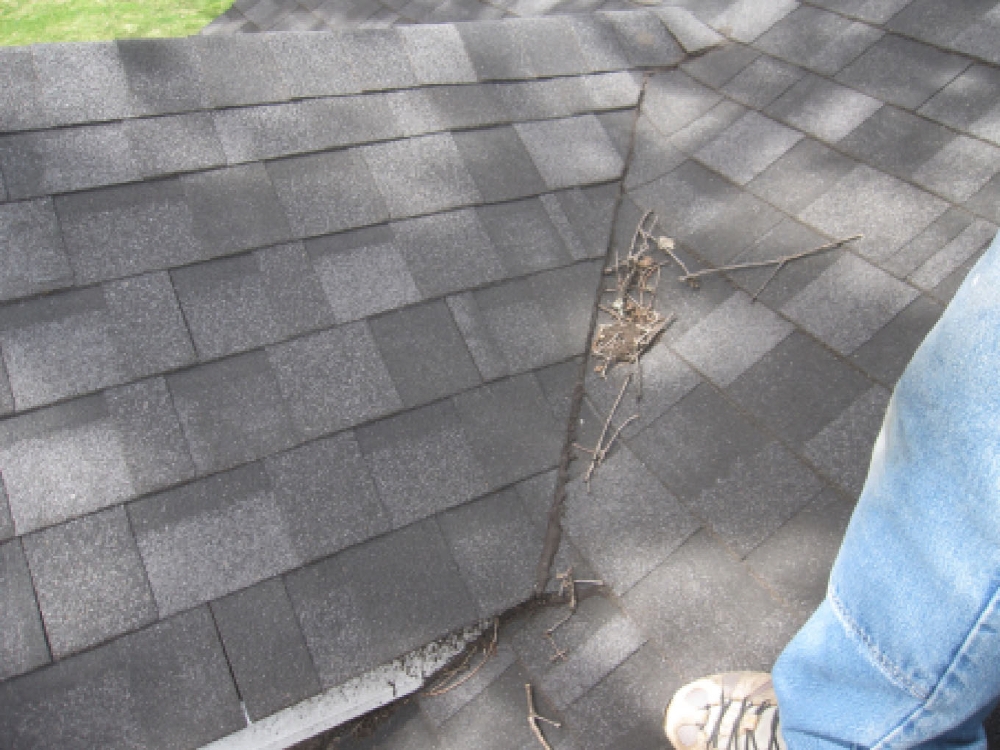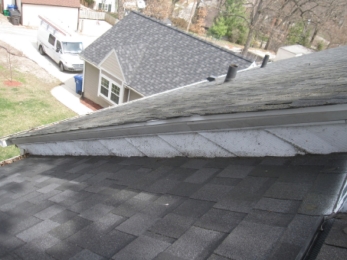Siding is too close to the brick horizontal surface. 2″ minimum clearance is recommended by product manufacturer.
All protruding trims are to have a flashing protection on the horizontal surface. Flashing at Openings and Horizontal Changes Install horizontal flashing extending from behind the siding and over the PrimeTrim at the tops of openings such as windows and doors as well as any horizontal material change such as bandboards or other horizontally applied trim. The flashing should tilt downward to allow water to drain away from the wall. Caulk where the flashing and siding or other materials meet. Caulking in lieu of metal flashing is not acceptable.
The top trim band has a flashing but the siding is caulked tight. This detail is to have a 1/4″ clearance without sealant to allow any incidental moisture to drain. The trim band at the top of the window is not protected with a flashing. This assembly is leaking, this missing flashing detail is most probably a big contributer to this problem.
This siding is too close to the roof plane and does not have a kick-out flashing 2″ minimum clearance is required by siding manufacturer.
Siding and trim too close to roof plane.
Trim does not have flashing protection. This leaves the horizontal surface open to absorption of moisture, leading to early degradation.
Siding too close to roof plane.
This valley is reverse cut. The accepted cut is to be on the taller roof plane.
Siding too close to roof plane. This siding is not painted.

